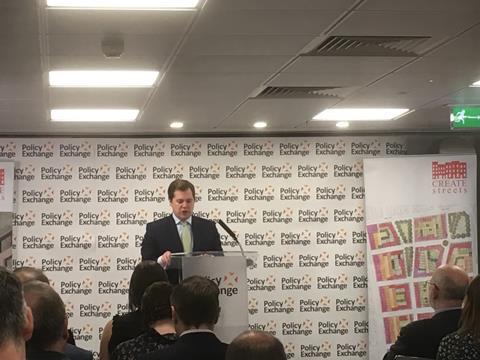Nation‚Äôs net zero target should be enshrined in new NPPF, says Green ∫√…´œ»…˙TV Council
The government’s revised planning framework is a missed opportunity to address the climate crisis by enshrining Britain’s zero carbon commitment among its requirements, campaigners have said.
The UK Green ∫√…´œ»…˙TV Council said it was disappointed that its advice on net zero had been ignored by the after several months of consultation, with a heavy focus on building beautifully.

“True sustainability and beauty are clearly intertwined, and this relationship should be central to our discussions around achieving a more sustainable built environment,” said policy officer Philip Box.
He welcomed the overall direction of the new NPPF and some of the changes incorporated into the new national model design code. But he added: “It is disappointing to see that suggestions to go further, in order to comprehensively align the NPPF with achieving our national net zero target, delivering climate adaptation and biodiversity recovery through development, were not taken forward.”
The NPPF, which must be given material consideration by planning officers and therefore by developers, devotes less than two of its 80 pages specifically to climate change, although considerably more to flood risk.
It says new development should be planned for in ways that “avoid increased vulnerability to the range of impacts arising from climate change. When new development is brought forward in areas which are vulnerable, care should be taken to ensure that risks can be managed through suitable adaptation measures, including through the planning of green infrastructure”. Development should also help to reduce greenhouse gas emissions through its location, orientation and design, it says.
The new NPPF’s publication coincided with an event hosted by the think tanks Policy Exchange and Create Streets whose founder, Nicholas Boys Smith, is to chair the new Office for Place. This will be supported by an advisory board that includes Paul Monaghan of Stirling Prize-winners AHMM and Robert Adam, formerly of Adam Architecture.
Housing secretary Robert Jenrick said the revised NPPF and design codes would ensure that communities were more meaningfully engaged in how new development happened.
“We expect every developer to be paying heed to the national model design code… and local councils to be creating their own codes with their local communities,” he said.
“This is about putting communities – not developers – in the driving seat to ensure good-quality design is the norm, and the return to a sense of stewardship – to building greener, enduringly popular homes and places that stand the test of time in every sense.”
He admitted that currently around 1% of the public got involved in their local plan-making process and perhaps triple that in commenting on planning applications.
But he said he wanted to see a revolutionary opening up of the planning system to “a much broader group of people going about their busy lives” by digitising it and making consultations available via smart phone.
But Jenrick did not respond to questions from the audience on where the money to equip under-resourced local planning authorities would come from.
The government’s attempt to focus on more than just housing numbers was welcomed by Fiona Howie, chief executive of the Town & Country Planning Association but she questioned how the government could square its beauty agenda with permitted development (PD) rights.
‚ÄúThere still seem to be important parts of the ∫√…´œ»…˙TV Better, ∫√…´œ»…˙TV Beautiful report ‚Äì which Robert Jenrick was so complimentary about ‚Äì that have not been addressed in the speeches and announcements to date,‚Äù she said.
“These include the emphasis the commission placed on long-term stewardship if we want places to be renewed, regenerated and cared for. And their proposition that meaningful standards for design and place-making should be applied to permitted development rights. These still need to be addressed if communities, supported by local authorities, are to truly be able to take the lead.”

























No comments yet